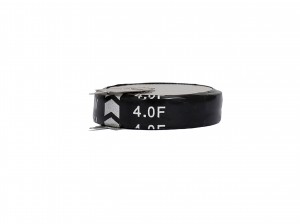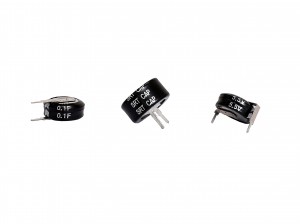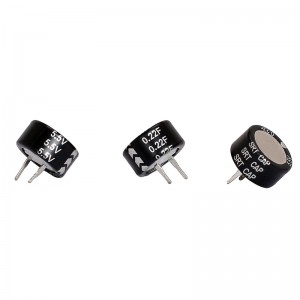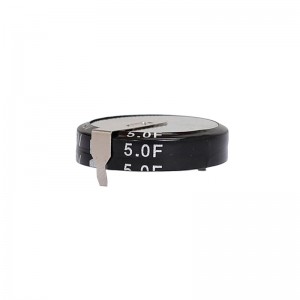Superkondensator-Knopfzellen
-

V-Typ Münztyp Superkondensator 4,0 F 5,5 V
Smart Meter, Münztyp, Ultrakondensator, super, Farad-Kondensator 5,5 V, 0,1 F, 0,22 F, 0,33 F, 0,47 F, 1,0 F, 1 F, 1,5 F, 2,0 F, 2 F, 4,0 F, 5,0 F
Lebensdauer unter Nennspannung – 500.000 Zyklen︱△C/C︱≤30%, ESR≤4-facher Anfangswert (25℃)
Das Testverfahren basiert auf—-IEC 62391-1 Feste elektrische Doppelschichtkondensatoren zur Verwendung in elektronischen Geräten – Teil 1:Allgemeine Spezifikation
Die Kapazität basiert auf der Konstantstromentladungsmethode
-

Münztyp 0,1 F 5,5 V Farad-Superkondensator
Münztyp 0,1 F 5,5 V Farad-Superkondensator
Lebensdauer unter Nennspannung – 500.000 Zyklen︱△C/C︱≤30%, ESR≤4-facher Anfangswert (25℃)
Das Testverfahren basiert auf—-IEC 62391-1 Feste elektrische Doppelschichtkondensatoren zur Verwendung in elektronischen Geräten – Teil 1:Allgemeine Spezifikation
Die Kapazität basiert auf der Konstantstromentladungsmethode
-

Münztyp C-Superkondensator 5,5 V 0,22 F
Münztyp Superkondensator 5,5 V 0,22 F C-Typ
-

Hochtemperatur-Superkondensator-Knopftyp 5,5 V 3,6 V 1,5 F
Nennkapazität: 0,1 F ~ 2,0 F
Nennspannung: 3,6 V ~ 5,5 V
Maßeinheit: PC
Struktur: V, H, C-Typ
Temperaturfunktion: -25℃~+85℃
-

Münztyp 5.0F 5.5V Farad Kondensator Doppelschichtkondensator
Smart Meter, Münztyp, Ultrakondensator, super, Farad-Kondensator 5,5 V, 0,1 F, 0,22 F, 0,33 F, 0,47 F, 1,0 F, 1 F, 1,5 F, 2,0 F, 2 F, 4,0 F, 5,0 F
Lebensdauer unter Nennspannung – 500.000 Zyklen︱△C/C︱≤30%, ESR≤4-facher Anfangswert (25℃)
Das Testverfahren basiert auf—-IEC 62391-1 Feste elektrische Doppelschichtkondensatoren zur Verwendung in elektronischen Geräten – Teil 1:Allgemeine Spezifikation
Die Kapazität basiert auf der Konstantstromentladungsmethode





